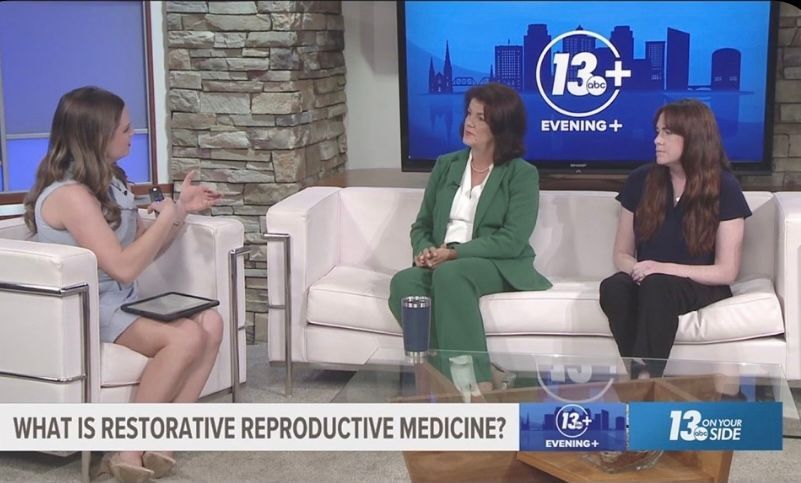What are PMADs?
PMADs are Perinatal Mood and Anxiety Disorders. They affect 1 out of every 5-7 women and may occur anytime during pregnancy or the first year postpartum. Often, PMADs peak around 3-4 months postpartum, or may be triggered when your period returns or when weaning from breastfeeding. While postpartum depression (PPD) is the best-known, there are several recognized PMADs to be aware of:
- Perinatal or Postpartum Depression (PPD) up to 20%, possibly higher
- Perinatal or Postpartum Anxiety (PPA) or Panic Disorder 5-7%
- Perinatal Obsessive Compulsive Disorder (OCD) up to 1-11%
- Postpartum Post Traumatic Stress Disorder (PTSD) 2-9%
- Perinatal Bipolar Disorder
- Postpartum Psychosis 1-2/1000 births
Symptoms of a PMAD can feel scary during pregnancy or the postpartum period, but know that there is help available and you do not need to suffer alone.
What is PPD?
Perinatal or Postpartum Depression (PPD) is one possible mood disorder under the umbrella term of PMADs. Because Baby Blues is a common experience in the first two weeks after birth for new mothers, it is often assumed that depressive disorders are bound to happen if you experience the Baby Blues. This is not always the case.
How are PMADs diagnosed?
We rely on specific screening tools and personal discussions for assessment of a person’s symptoms. One of the key factors in symptom assessment for each respective disorder is the duration of symptoms.
Why is mental health and wellness important in pregnancy and postpartum?
Perinatal mood and anxiety disorders affect the health of both the mother and the baby during pregnancy, and there are some implications for the baby as they grow up later in life. Anxiety or depression may have implications such as low birth weight and difficulty bonding between the mother and infant. Because of this, it’s important to find supportive treatment strategies for PMADs that occur in pregnancy.
Why might I be susceptible to PMADs?
There are many reasons that a parent may be susceptible to a perinatal mood or anxiety disorder. Some of the risk factors include:
- History of perinatal mood or anxiety disorder
- Personal or family history of mood or anxiety disorder
- Endocrine disorder like thyroid disorder or diabetes
- Pregnancy complications or traumatic birth experience
- Challenging adjustment due to baby’s needs or temperament, NICU stay, special needs
- History of PMS or PMDD
- Poverty, loss of income, financial challenges, access to food/shelter
- Lack of social support or support from partner
- History of abuse
- Unexpected or unplanned pregnancy
- History of infertility
- History of child loss, miscarriage
- Multiple pregnancy (twins, triplets, etc)
- Big life changes: new home, job, city
What are some symptoms of various PMADs?
One of the key signs of needing support for a mood or anxiety disorder is that symptoms do not resolve within a short period of time or with simple interventions such as increased social support, nutrient-dense diet, or uninterrupted sleep.
If you are ever concerned about symptoms, have thoughts about harming yourself or your baby, or that harm to self or baby are imminent, immediately contact your clinician and another trusted individual so you can be safe.
- Symptoms to discuss in confidentiality with your healthcare provider include:
- Irritability or persistent unsettled feeling
- Guilt, shame
- Hopelessness, worthlessness
- Tearfulness, sadness
- Consistent worrying and racing thoughts
- Changes in bowel movements, stomach pains
- Chest pain, palpitations, shortness of breath
- Thoughts of harming self or baby
- Feeling flat, unable to bond with baby
- Intrusive thoughts that harm will come to baby that interferes with ability to sleep or participate in daily activity
- Loss of interest, joy, pleasure
- Rage, angry or scary thoughts
- Lack of appetite
- Inability to sleep
- Inability to let others see, hold the baby
What is considered “normal” and what isn’t? PPD vs Baby Blues
Sometimes it can be difficult to distinguish between the baby blues and postpartum depression, or between the normal worries of parenthood vs. intrusive anxiety or OCD.
Specifically, postpartum depression usually does not resolve without treatment, and lasts beyond a period of two weeks. In contrast, 40-80% of women will experience a period of the Baby Blues which lasts for about 1-2 weeks shortly after a baby is born. Common symptoms include sadness, worry, fatigue, tearfulness. Intervention is usually not necessary, symptoms do not worsen, and the Baby Blues resolve with time and positive coping mechanisms.
If symptoms begin to feel severe, are recurring, or extend beyond a two week period, it may be wise to have a honest conversation with someone you trust and to talk with your healthcare clinician.
Is it possible to develop symptoms if I haven’t had them in previous pregnancies?
While PMADs are more common if you have experienced one before, they may also emerge for the first time in a new pregnancy. For example, the circumstances surrounding a second birth may be entirely different from the first – maybe you’ve moved, experienced a birth trauma or NICU stay, are encountering a difficult transition. We recommend that all pregnant women create a plan in case unwanted symptoms arise. Have someone you trust that will check in with you on a regular basis to review how you are adjusting, and to remind you to schedule a visit with your healthcare professional if you aren’t feeling yourself.
If I had these symptoms in previous pregnancies am I more likely to get them again?
It is common for women to experience postpartum mental health mood or anxiety disorders in subsequent pregnancies. Research shows that preparation is key in planning for a positive experience. Ways to do this include:
- Setting up additional appointments for mood checks during pregnancy and the postpartum period
- Plan ahead for psychotherapy or other talk therapy appointments
- Establish social support early
- If medication was a helpful management strategy before, you and your clinician may consider a time to begin this either during pregnancy or postpartum that is effective for you
How can I be screened for each? When does screening happen?
You can expect to see screening questionnaires during both pregnancy and postpartum visits. If you are experiencing concerning symptoms and having difficulty talking about them, you can always request a screening test. Screening tests are confidential and are designed to help find the next best steps for your plan of care. They also help to evaluate if your current plan of care is working well for you, or if something different would be better.
What are possible treatments?
Research shows us that psychotherapy and a strong social network are two of the most helpful interventions for preventing and treating PMADs. However, sometimes medications or other tools may need to be integrate. The best care plans for PMADs are often created with an interdisciplinary approach which may include:
- Focus on positive lifestyle factors
- Cognitive behavioral therapy or other therapeutic modalities
- Medications as determined by your obstetrician, nurse midwife, psychiatrist, or other clinician
- Supplements, often focused on reaching adequate RDA of micronutrients as recommended by the NIH
Are there things I can do to prevent PMADs?
While there is no guaranteed preventative strategy, there are things you can do to support your mental health before, during, and after pregnancy. One strategy is delineated by the acronym SNOWBALL from the Utah Maternal Mental Health Collaborative. Practice these to the best of your ability to ensure that they become positive habits in your life.
- Sleep: ideally 4-6 uninterrupted hours daily
- Nutrition: take a high quality prenatal vitamin, make half your plate fruits and vegetables, consume both protein and high-fiber carbohydrates
- Omega 3s: fish oil plays a positive role in preventing and treating anxiety and depression. Look for an omega 3 with EPA and DHA and review it with your provider.
- Walk: if this is outside, even better!
- Breaks, baby breaks: shoot for 2 hours, 3 days a week
- Adult time: virtually or in person. Consider journaling.
- Liquids: dehydration inhibits thought processes and may increase feelings of worry
- Laughter: releases hormones in the brain that contribute to positive mood
How does Reply support me if I develop symptoms?
Please do not suffer alone, call us at 919.230.2100 or send a portal message if you are having unwanted symptoms. At Reply, we have developed a team-based approach to caring for mental health. We believe it is important to initiate more frequent communication and screening if you have experienced a PMAD in the past or share that you are experiencing symptoms of a PMAD. We offer screening and discussion to every woman at least once during both pregnancy and the postpartum period, and then as frequently as needed.
We also believe in finding the best approach to support your mental health, and each individual will respond to a different treatment plan. We will work one-on-one with you to find something that best supports your health and lifestyle.
Some situations are emergent, and if you are experiencing symptoms like thoughts of harming yourself or your baby, please know that there is support immediately available and call 911.











